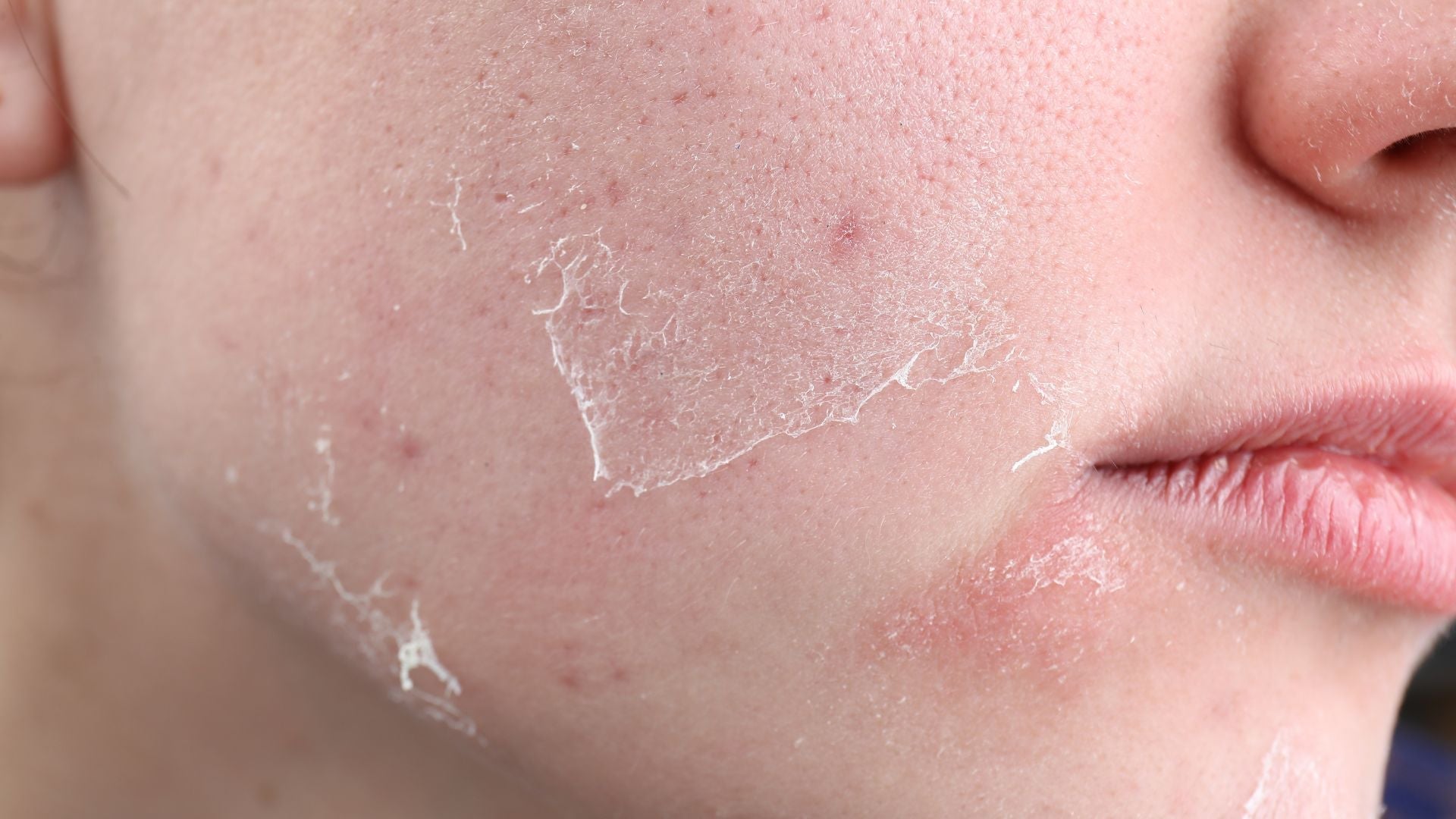
DRY SKIN
When the skin is dry and scaly, it feels tight, rough and irritated with visible flakes
of dead skin cells. It lacks moisture and can itch or turn red.
To restore the skin's balance, it is essential to use the right ones
skin care products that provide in-depth moisture and strengthen the skin barrier.
Products with ingredients such as hyaluronic acid and ceramides can help
with relieving dryness and preventing further irritation.
Sort by
35 products
Filters
WHAT IS THE DIFFERENCE BETWEEN DRY AND DEHYDRATED SKIN?
Dry skin can be a challenge for many and often creates a tight, rough and scaly feeling. This type of skin lacks natural oils (sebum), which is quite different from dehydrated skin, which lacks water. To understand and care for dry skin correctly, it is important to know the difference between dry and dehydrated skin and choose products with nourishing ingredients and oils that add moisture and fats to the skin.
What is dry skin?
Dry skin is a skin type that lacks natural oils, which makes the skin often feel tight and irritated. It can also be rough and scaly and tends to develop fine lines and wrinkles more quickly than other skin types. Dry skin is typically genetic, but it can be aggravated by factors such as age and climate.
Extremely dry skin - How to recognize and care for it
Extremely dry skin is a worsening of dry skin, where the skin not only feels tight, but can also begin to crack or develop eczema. In these cases, it is important to apply an anti-itch cream and use soothing, nourishing ingredients to reduce irritation.
The difference between dry skin and dehydrated skin
An important distinction that many are not aware of is the difference between dry and dehydrated skin. Dry skin lacks oil, making it a skin type, while dehydrated skin lacks water, which can affect all skin types, even those prone to oily skin.
Skin care for dry skin
When you have dry skin, it is important to use a cream with natural oils and fats, which can rebuild the skin's natural barrier. Ceramides, shea butter and other rich oil-based moisturisers are essential ingredients as they help bind moisture into the skin.
How to moisturize dry skin effectively?
In order to moisturize dry skin optimally, it is crucial to use products several times a day. Start with a serum for extra moisture, and follow up with a nourishing day cream and a rich night cream. Remember that it is important to apply the cream to damp skin to seal in the moisture.
Face and dry skin - How to protect the skin
The face is particularly prone to dryness, especially in winter. Therefore, it is important to protect the skin by using a soothing and moisturizing cream that can create a protective barrier. A good cream for dry skin on the face will often contain ceramides and hyaluronic acid, which help retain moisture in the skin.
Skin types and their different needs
All skin types can experience dehydrated skin, but dry skin is a separate skin type that requires specific care. For example, sensitive skin may often require an anti-itch cream with soothing properties, while oily skin may benefit from light moisturizers with water-based ingredients.
Dry skin and fine lines – How can you minimize them?
Dry skin tends to develop fine lines and wrinkles faster as it lacks oil. By using products with fats and ceramides, you can minimize the appearance of fine lines and give the skin a youthful glow.
Important ingredients for the care of dry and dehydrated skin
To care for both dry and dehydrated skin, you should choose products with ingredients such as hyaluronic acid, ceramides, shea butter and other nourishing fats. These ingredients will help the skin retain both moisture and oils, leaving the skin feeling supple, healthy and well cared for.
The main difference between dry and dehydrated skin
Dry skin lacks oil, while dehydrated skin lacks water. By understanding this difference and choosing the right products, you can achieve healthy and well-cared for skin, regardless of whether you have dry or dehydrated skin.


